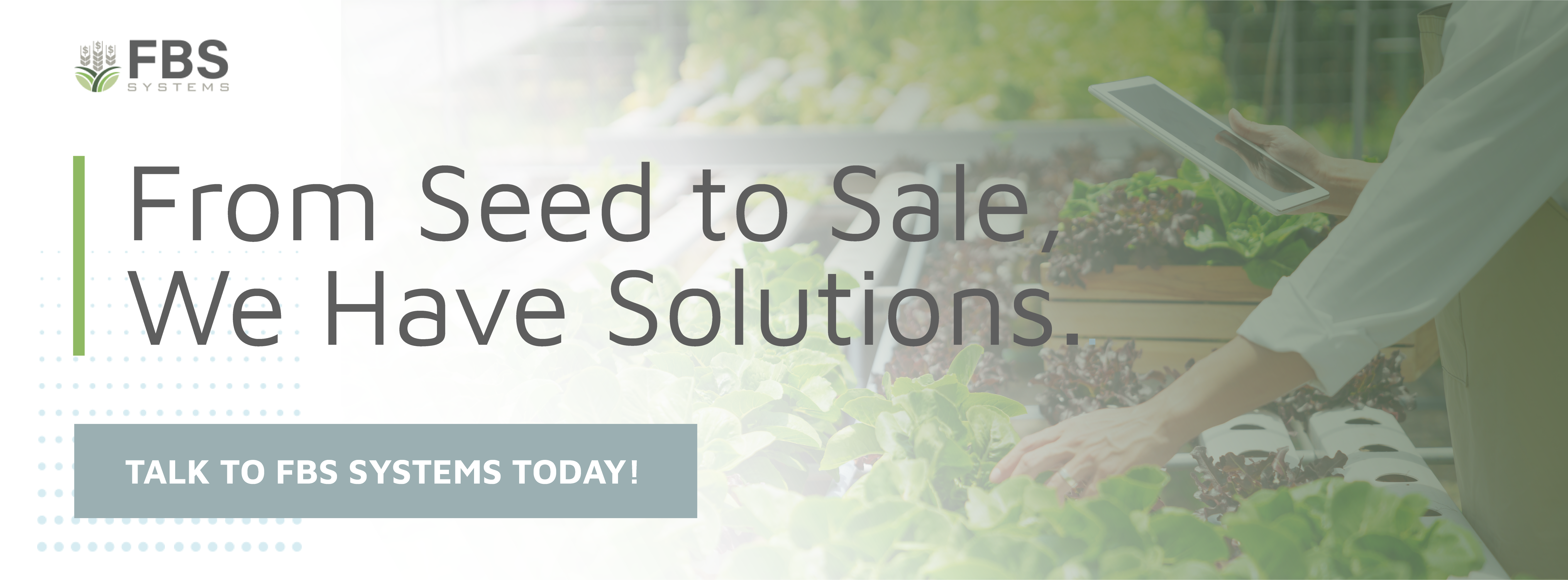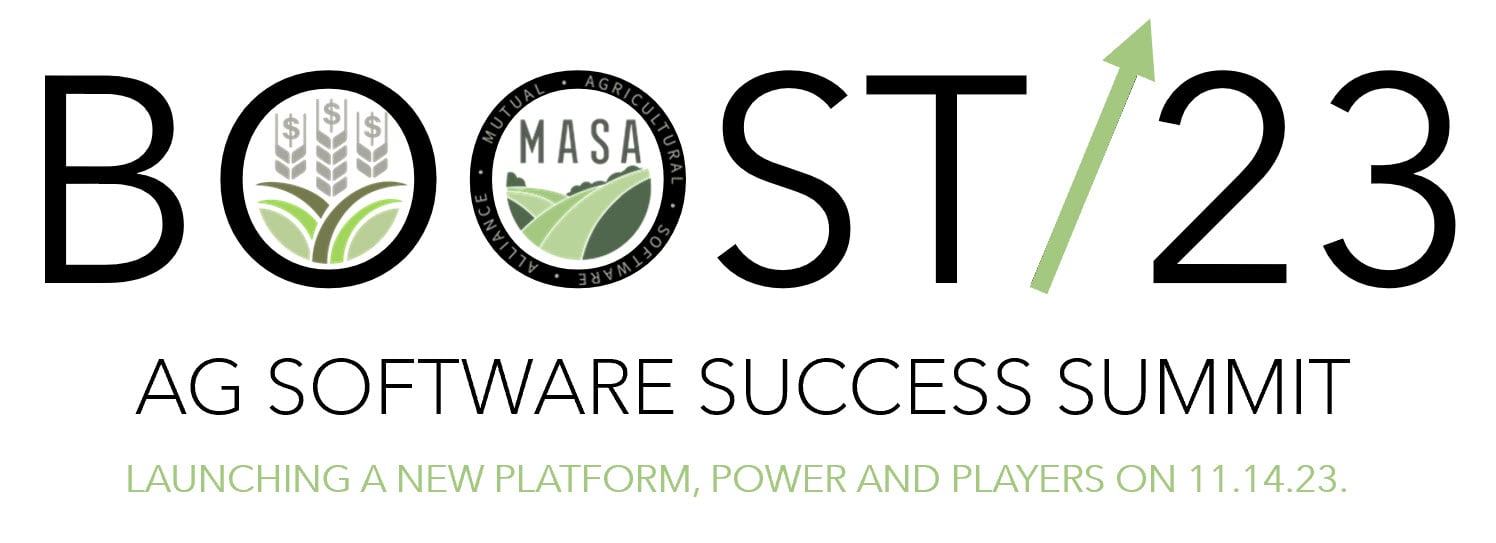Farming is a business. And, like with any business, there’s always an element of risk. Effectively managing farming risks is an important part of maximizing your agricultural business’ long-term success and profitability.
What are the kinds of risks that your farming enterprises might encounter? How can you make a farm risk management plan that effectively reduces the impacts of common farming business risks?
Let’s talk a bit about the types of risks farmers face, some tools and strategies for managing them, and how you can use agricultural software to support your entire farming operation.
Table of Contents:
- Types of Risks On a Farm
- Tools and Strategies for Farm Risk Management
- Get Software to Support Your Whole Farm
Types of Risks On a Farm
When talking about farm risk management, there are countless ways to categorize risks. For this blog, let’s break them down into three broad categories similar to how Olds College of Agriculture and Technology does it: production risks, marketing risks, and financial risks.
Production Risks
Production risks are primarily concerned with variability in yields for your various crop and livestock enterprises. Things like pest infestations, inclement weather, feed and fertilizer supply chain disruptions, production disruptions caused by the introduction of new technologies and techniques can all be considered production risks since they can impact your yield.
In short, if it can hurt how much you produce (and thus, can earn from the sale of your products), it could be considered a production risk.
This type of risk can have a heavier influence on farming than it does on some other production industries because of the sheer variety of risk factors that impact production. Consider that, in a manufacturing business, if the business takes in X amount of raw materials, it can typically produce Y number of products unless there’s a labor shortage or major equipment failure.
In farming, X input doesn’t necessarily always equal Y output. For example, crops and livestock can catch diseases, causing reduced yields. Pests can destroy crops or kill livestock. Storms can ruin crops before they can be sold. So, farmers have to be more alert for production risks than many other business owners.
Marketing Risks
Farmers don’t control the prices for the products they make. As a commodity product, grains and other farming products have their prices set by government agencies. Organizations such as the Commodity Futures Trading Commission (CFTC) regulate the trading of commodity futures, which has a major impact on farming businesses since futures trading (the sale of a set amount of commodity goods at a prearranged price on a set date) is a key way to combat price volatility.
The CFTC also investigates potential abuse of commodities and takes enforcement actions if deemed appropriate.
Ever-changing relationships between supply and demand for commodity crops and livestock, as well as shifts in production costs, can make it incredibly difficult for farmers to perfectly manage their marketing risks.
Market forces, changes to export policies, level of competition for a particular product, and other factors can all impact a farmer’s price per production unit and whether they can secure a sale for their products.
For example, if a large number of new potato farms emerge because of a new subsidy program, the supply of potatoes will increase. Existing potato farms will be impacted because, with higher supply relative to demand, the cost of potatoes by the ton will shrink.
Financial Risks
Many farm owners and operators borrow money to help fuel the growth and operation of the farm in the short term. This means dealing with financial risks based on the availability of credit at a favorable interest rate, potential cash flow issues when repaying loans, and your farming business’ credit score (or your personal credit score, if you apply for financial services under your name instead of under the business entity of your farm).
One of the major challenges in dealing with financial, marketing, and production risks is how often they can overlap.
For example, say you have a futures contract with a buyer to sell twenty tons of produce. However, to meet that obligation, you realize that you need to increase farm production by roughly 20%. So, you go to your lender and ask for a loan to procure new farming equipment and add more labor.
The bank initially denies the loan, delaying your ability to acquire the equipment and labor you need to make your contractual obligations. You get the loan eventually, but by the time you do, it’s too late and you miss your production goal—leading to penalties such as price adjustments or cancellation of payments.
A shortage of finances leads to productivity loss, resulting in the breach of contracts that leads to marketing risks impacting prices and profits for the sale of goods.
Tools and Strategies for Farm Risk Management Planning
Aside from knowing what your risks are, the most important part of risk management for farming is understanding the different ways you can mitigate them. There are numerous farm risk management planning tools and strategies that you can use.
Some of the most common ways that farmers can mitigate risk include:

Acquiring Crop Insurance
Crop insurance is one of the most common tools for mitigating production risks in a farming enterprise. Under crop insurance, the farmer is protected against, as the USDA puts it, “loss of yield exceeding a deductible amount.” However, the losses covered by insurance “must be due to unavoidable perils beyond the farmer’s control.”
For example, say that Joe was growing a crop that died due to an extreme heat wave and prolonged drought. In this circumstance, the loss was caused by weather patterns that were beyond Joe’s control. So, this loss would likely be covered by his crop insurance policy if he had one.
Meanwhile, Sam loses a crop because he neglected to provide the right fertilizer for the field and didn’t have enough workers to care for the crop. In this case, Sam might have a much harder time collecting on his crop insurance since the care provided to the crop was largely under his control.
When purchasing crop insurance, it’s important to carefully review the terms and determine exactly what kinds of losses the insurance covers, how much the coverage is worth, what the deductible amounts are, and under what conditions the insurer may terminate the contract. Having a lawyer review the insurance document for noteworthy omissions or errors can be a lifesaver.
Have a crop that you can’t get insurance for? The Noninsured Crop Disaster Assistance Program (NAP) can be a useful protection for crops that can’t be covered under regular crop insurance.
Creating a Risk Management Checklist
Want to make sure that you’ve covered every major risk factor that could impact your farm’s profits? Create a checklist of your major production, marketing, and financial risk factors and go through them one at a time.
Some basic checklist items you should include are:
- Have you recently determined what your loss risks are?
- Have you evaluated alternative production method costs and impacts?
- Is there redundancy in your supply chain in case of a supplier issue?
- Do you have a written marketing plan?
- Do you have a business plan in writing?
- Are you aware of what your “break-even” costs are?
- Do you have a solid understanding of your upcoming capital outlays (supplies, labor, utilities, loan repayments, etc.)?
- Have you reviewed your tax liability within the last season?
These are just a few sample questions. The USDA has a checklist that can serve as a good starting point for your own farm risk management plan.
Conducting Disaster Planning
When creating a risk management plan, it can be useful to consider the worst-case scenario. What would be the effect of a total failure of a crop or livestock enterprise? What risk factors are the most likely to lead to a total failure? How can you mitigate these risks and their impacts? Answering these questions is the first step in disaster planning and avoidance.
For example, if your farm is located in an area known for periodic storms, such as the infamous “Tornado Alley,” then your disaster plan should include countermeasures for crop loss and property damage caused by severe weather. This can include crop insurance to recoup losses from storm damage, building hardened storage units to withstand severe weather to prevent losses, and even familiarizing yourself with disaster assistance programs offered by the USDA’s Farm Service Agency.
Many of these programs have strict eligibility requirements and may require some preparation beforehand, so taking some time to research them before you need them can be useful.
Enterprise Diversification
One key risk management strategy employed by many modern farmers is enterprise diversification. With a broad mix of crop types and livestock enterprises, farm owners and operators can reduce the risk that a market shift impacting the price of a crop will cause a major loss of revenue.
Also, the impacts of some crop- and animal-borne diseases can be reduced if the farm doesn’t only specialize in a single enterprise vulnerable to that disease. For example, say that Bob exclusively grows potatoes while George grows potatoes, grains, and some livestock. An outbreak of potato pink rot occurs, infecting the majority of the tubers in the region. Bob faces a near-total loss since he was focused solely on potatoes. Meanwhile, George is facing a much smaller loss that his farm can more easily absorb since he still has grain and livestock products to fall back on.
Get Software to Support Your Whole Farm
Does your farming enterprise plan account for the biggest risk factors facing your operation? Do you have the tools to catch the early warning signs of emerging risks and operational losses that can hurt your farm’s profits?
Having the right agricultural software can play a key role in your farm’s risk management plan. How? With the right data at your fingertips, you can more easily trace problems to their source, identify potential supply issues that impact productivity, gain insight into your cost centers to find where you can reduce your expenses without reducing production, and where you may need to allocate more resources to hit your goals.
FBS Systems provides a whole farm software solution that combines agricultural accounting and financial analysis with crop, livestock, and other farm management tools to help you make managing your farm’s risks easier.
From crop cost analysis to in-depth feeding closeouts, cash and accrual financial reports, and life cycle budgeting, FBS has the software tools you need to manage risk on your farm. Discover software solutions built by farmers, for farmers by contacting us today!

















